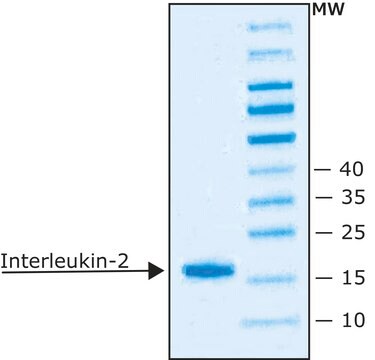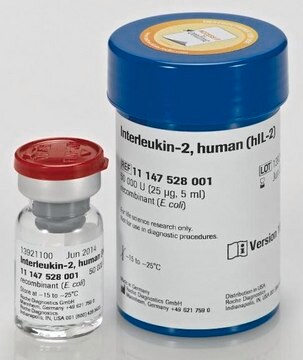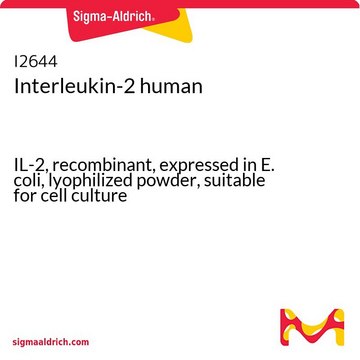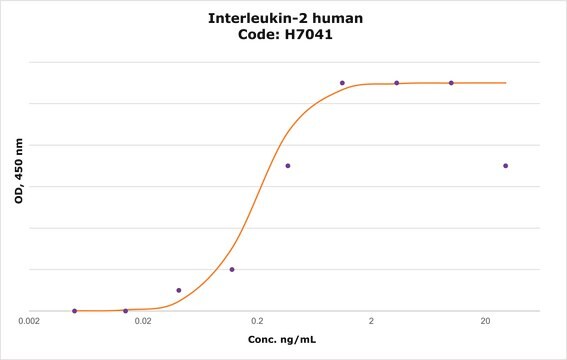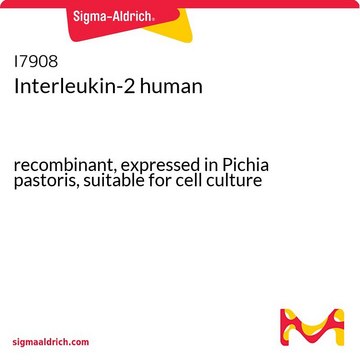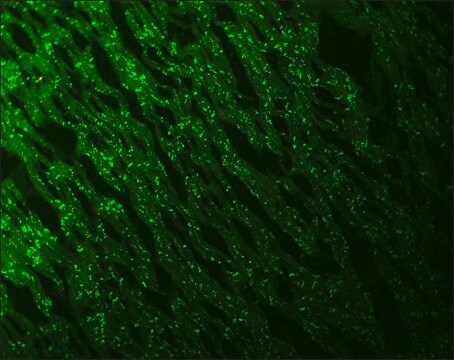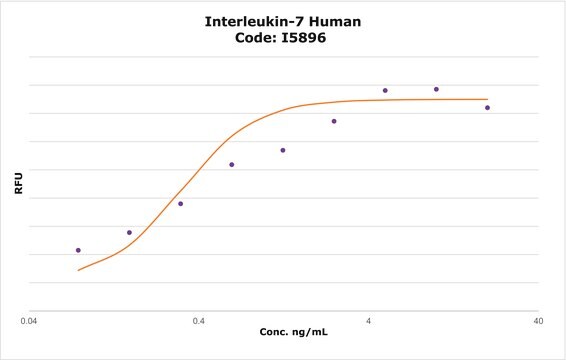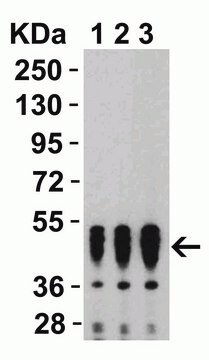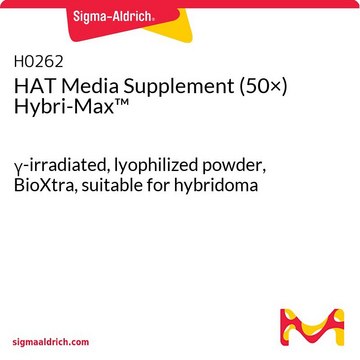11271164001
Roche
Interleukin-2, mouse (mIL-2)
recombinant (E. coli)
Synonym(s):
mIL-2, mouse interleukin-2
About This Item
Recommended Products
biological source
mouse
Quality Level
recombinant
expressed in E. coli
Assay
>95% (SDS-PAGE)
form
solution
potency
<0.5 ng/mL EC50
mol wt
17,200 Da
packaging
pkg of 10,000 U (5 μg, 1 ml)
manufacturer/tradename
Roche
storage condition
avoid repeated freeze/thaw cycles
technique(s)
inhibition assay: suitable
impurities
<0.1 EU/μgtested (LAL test)
UniProt accession no.
storage temp.
−20°C
Gene Information
mouse ... Il2(16183)
General description
Specificity
Application
- Supports the growth of murine CTLL cells (murine T cell line), but not that of human T-cells.
- Strongly inhibits the binding of recombinant human IL-2 to murine responder cells.
- Weakly inhibits the binding to human responder cells.
- Shares identical biological and immunological activities with human IL-2.
- Is a convenient tool for extensive studies of the pharmacological and physiological activities of IL-2 in murine models.
- used for the stimulation of murine T-cells
Quality
Sequence
Unit Definition
Preparation Note
Storage conditions (working solution): -15 to -25 °C
Note: Avoid repeated freezing and thawing.
Other Notes
Note: The biological activity of this product may vary in different in vitro applications. Determine the optimal concentration range for specific applications.
EC 50 definition/Unit definition: The amount of mIL-2 that is required to support half-maximal stimulation of cell proliferation (XTT cleavage) with CTLL-2 cells (1 unit equals =0.5 ng).
Storage Class Code
12 - Non Combustible Liquids
WGK
nwg
Flash Point(F)
No data available
Flash Point(C)
No data available
Certificates of Analysis (COA)
Search for Certificates of Analysis (COA) by entering the products Lot/Batch Number. Lot and Batch Numbers can be found on a product’s label following the words ‘Lot’ or ‘Batch’.
Already Own This Product?
Find documentation for the products that you have recently purchased in the Document Library.
Customers Also Viewed
Our team of scientists has experience in all areas of research including Life Science, Material Science, Chemical Synthesis, Chromatography, Analytical and many others.
Contact Technical Service